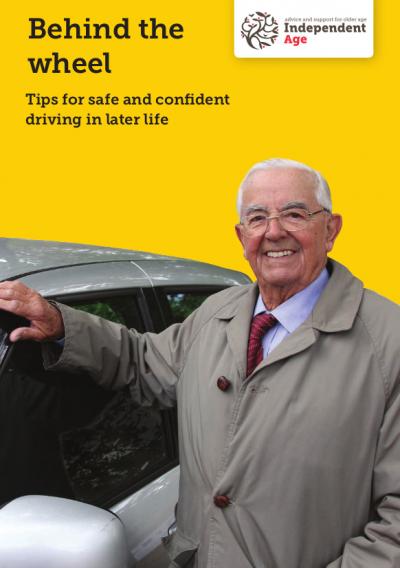Older drivers are statistically far safer than young ones, but there comes a time when we all must question whether we can continue driving safely and with confidence.
Being able to drive can be vital to maintaining independence in older age, especially in more isolated or rural areas poorly served by public transport. Sadly, a variety of age-related conditions can begin to curb that ability, from physical limitations to dementia or even just a slowing of reflexes and reaction times.
 There’s often a delicate balance to be found in hanging onto the independence which driving brings and knowing whether you’re still safe behind the wheel. The decision should be based not on your age, but on your ability to keep yourself and others safe on the roads.
There’s often a delicate balance to be found in hanging onto the independence which driving brings and knowing whether you’re still safe behind the wheel. The decision should be based not on your age, but on your ability to keep yourself and others safe on the roads.
Thankfully, help is at hand from leading UK charity Independent Age. It has produced a free and informative 35-page advice guide called: “Behind the wheel – tips for safe and confident driving in later life”.
Featuring contributions from several older and experienced drivers, it covers topics including ways to stay safe and boost your confidence, what the law says about driving and how to recognised if it might be time to hang up your car keys for good. There’s also a useful checklist to help you decide if you should get a second opinion on your driving.
Most of us undergo physical changes as part of the natural process of getting older. These can include deterioration in eyesight or hearing, pain in our joints or reduced mobility, taking longer to react to things or process information, and getting tired more easily or finding it difficult to concentrate for extended periods. All of these things can impact on our ability to drive, but they don’t necessarily mean we need to stop driving.
There are various ways to cope with these changes and continue driving safely, which are addressed in detail in the Independent Age guide. For example, you might need to have your eyesight or hearing professionally tested so that adjustments can be made to help you stay safe. Alternatively, you might need to amend your driving habits, perhaps sticking to shorter journeys, routes you know well, or avoiding the busiest times of day or driving at night.
It’s not just you, the driver, who has changed over the years – today’s driving environment could be massively different to when you first got behind the wheel. As 93-year-old Geoffrey, one of the contributors to the booklet, puts it: “Sixty years ago you could go a long way without meeting another car. Nowadays there are loads of signs, roundabouts and other hazards. Anybody who drives a car today needs to be really on the ball.”
It could be that you’ve lost confidence in your driving ability, particularly if you’ve had a minor bump or near miss, or just find the roads too busy and stressful. Maybe others have questioned your ability to keep driving, but only you can decide if you’re really safe and confident to carry on. Again, the booklet has helpful advice in this area, and on ways to boost your confidence.
One way could be to book an independent driver assessment, so a fresh pair of eyes can look at your driving style and pass on helpful advice. Various organisations (listed in the guide) offer these assessments, or you could just book a session with a local driving instructor.
Stuart, a driver assessor for the Royal Society for the Prevention of Accidents, says: “The assessment is non-threatening – there is no pass or fail, just advice to help keep you safe. If you are unable to turn your neck, it might be that you could make use of a blind spot mirror on your door mirrors and position your car differently at a junction so that you can see more.”
If fact, there are many modifications which can be made to cars to make them easier to drive for people with a range of conditions. Perhaps just switching from a manual gearbox car to an automatic could give your driving a new lease of life? If you’re disabled you could also join the Motability scheme, with details in the booklet.
Your driving licence will automatically expire when you reach 70 and from then you need to renew it every three years. You don’t have to sit another test, but you do have to answer questions about your general health and eyesight and sign a self-declaration that you are fit to drive. Various medical conditions must, by law, be reported to the DVLA and might stop you driving temporarily or permanently.
If you do have to stop driving, or choose to do so, you’ll need to find alternative ways of getting around and the advice guide is full of useful tips. Like all the guides produced by Independent Age on a variety of age-related issues, the “Behind the wheel” booklet is free to read or download from its website by clicking here. You can also request a printed copy by post or phone the charity’s free helpline on 0800 319 6789.
Remember, only you can decide if, or when, it’s time to stop driving, but this excellent and clearly laid out booklet will help you make an informed decision.
